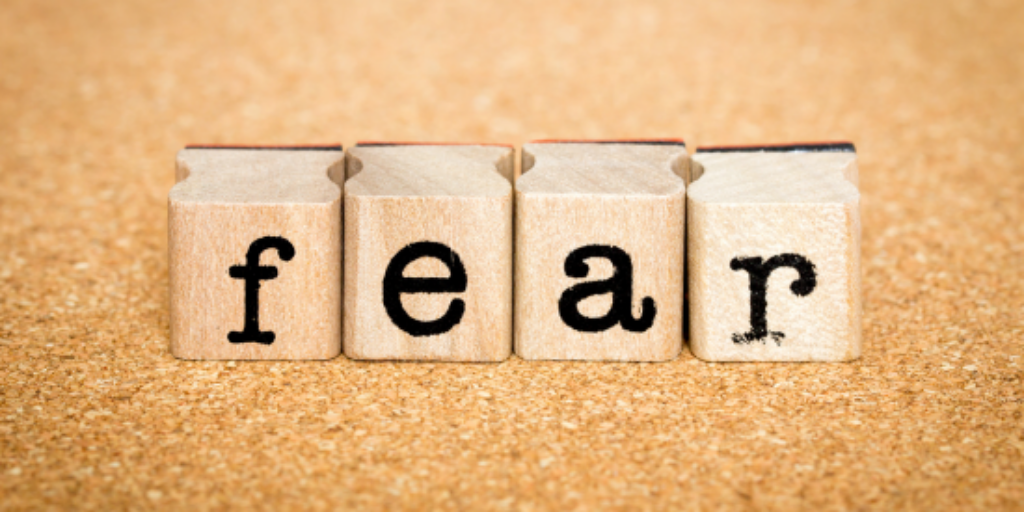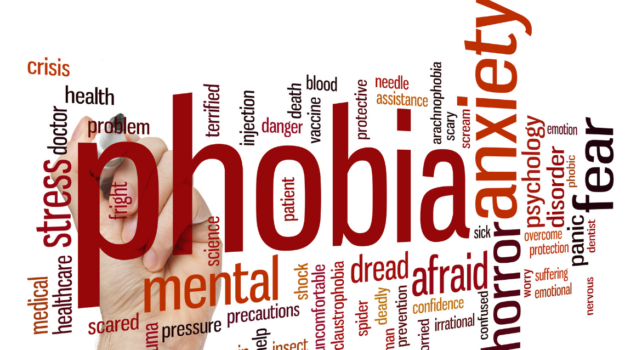Fear is a natural emotion that is triggered by the perception of danger or threat. It is an adaptive response that helps us to protect ourselves from harm. Phobia, on the other hand, is an excessive or irrational fear of a specific object, situation, or activity. The fear is out of proportion to the actual danger and can lead to avoidance behaviors and significant distress. Phobias are a type of anxiety disorder and are relatively common, affecting about 12% of the population at some point in their lives. They can be treated with a combination of therapy, such as cognitive-behavioral therapy and exposure therapy, and medication.
While it may seem like there’s no way out for people suffering from these crippling fears, there are treatments available that can help them overcome their anxieties and live normal lives.
Agoraphobia is a common phobia, affecting about 20% of people. It is characterized by intense anxiety in open spaces or public places such as shopping centers, public transportation, and busy streets. Treatments for agoraphobia include Cognitive Behavioral Therapy (CBT) which aims to change the way a person thinks about their fears, and exposure therapy, which gradually exposes the person to the feared situation in a controlled and safe environment. Medication, such as antidepressants, may also be used in conjunction with therapy to manage symptoms.
Claustrophobia is a prevalent phobia, characterized by an intense fear of confined spaces such as elevators, tunnels, or small rooms. Like agoraphobia, treatment for claustrophobia typically involves a combination of different approaches, such as cognitive-behavioral therapy (CBT) and exposure therapy, which help individuals change their thoughts and behaviors associated with their phobia, as well as gradually exposing them to the feared situations in a controlled and safe environment. Acrophobia is a specific type of claustrophobia that is characterized by a fear of high places, such as buildings or mountains. Similarly, CBT can be used to help sufferers learn how to deal with their fears by teaching them specific techniques for coping with high places, such as visualization and deep breathing. Medications, such as antidepressants, may also be used in conjunction with therapy to manage symptoms.
What is fear?
Fear and phobia are related but distinct concepts. Fear is a normal emotional response to a perceived threat or danger, while a phobia is an excessive or irrational fear that interferes with an individual’s daily life. People with phobias experience intense fear and anxiety when faced with the object or situation they fear, and may go to great lengths to avoid it. Phobias can be treated through therapy, such as cognitive-behavioral therapy, and in some cases, medication.
 There are many different types of phobias (far too many to list here!). Some common examples include agoraphobia (a fear of open spaces), claustrophobia (a fear of enclosed spaces), social anxiety disorder (a fear of being around other people) and specific phobias such as arachnophobia (a fear of spiders) or acrophobia (a fear heights).
There are many different types of phobias (far too many to list here!). Some common examples include agoraphobia (a fear of open spaces), claustrophobia (a fear of enclosed spaces), social anxiety disorder (a fear of being around other people) and specific phobias such as arachnophobia (a fear of spiders) or acrophobia (a fear heights).
If you think you might have a phobic disorder, it’s important to seek professional help.Cognitive behavioral therapy is usually very effective in treating this condition.
A phobia is an excessive or irrational fear of a specific object, situation, or activity that is out of proportion to the actual danger posed and significantly interferes with daily life. People with phobias may experience intense anxiety and physical symptoms, such as a rapid heartbeat, when exposed to the object or situation they fear. They may also go to great lengths to avoid the feared stimulus. Treatment for phobias typically includes therapy, such as cognitive-behavioral therapy or exposure therapy, and in some cases, medication.
There are many different types of phobias (including animal phobias like snakes or dogs; natural environment phobias like heights; situational phobias like driving; blood–injection–injury type phobia is related to needles); and there is not one specific phobia that applies to every person.
Different types of fear
Different people can have different levels of fear and anxiety, and this can be influenced by a variety of factors such as genetics, past experiences, and individual cognitive and emotional processes.
 Situational fear, also known as acute fear, is a normal and adaptive response to a specific event or situation that poses a perceived threat, such as public speaking or heights. This type of fear is typically short-lived and subsides once the situation is over.
Situational fear, also known as acute fear, is a normal and adaptive response to a specific event or situation that poses a perceived threat, such as public speaking or heights. This type of fear is typically short-lived and subsides once the situation is over.
Reflexive fear, also known as innate or instinctual fear, is a rapid and automatic response to a sudden stimulus, such as a loud noise or a snake. This type of fear is hardwired into the brain and is a survival mechanism that helps us to react quickly to potential danger.
Persistent or chronic fear, also known as a phobia, is an excessive or unrealistic fear of a specific object, situation, or activity that can last for a long period of time. This type of fear can be acquired through conditioning or past experiences and can have a significant impact on a person’s mental health and overall well-being.
Each type of fear can have a different impact on mental health and overall well-being. Acute and reflexive fear are normal and adaptive responses and do not necessarily have negative effects on mental health and overall well-being. However, persistent or chronic fear can lead to anxiety disorders, depression and other mental health issues, and can interfere with daily activities and overall quality of life.
Fear and phobia:
What’s the difference?
Fear and phobia are related concepts, but they have some key differences.
Fear is a normal emotional response to a perceived threat. It is an instinctual response that helps to protect us from danger by triggering the “fight or flight” response. Fear is typically short-lived and subsides once the threat has passed.
A phobia, on the other hand, is an excessive or irrational fear of a specific object, situation, or activity. It is an intense fear that is out of proportion to the actual danger posed and significantly interferes with daily life. People with phobias may experience intense anxiety and physical symptoms, such as a rapid heartbeat, when exposed to the object or situation they fear. They may also go to great lengths to avoid the feared stimulus. Unlike fear, phobia is persistent and can last for months or years.
In summary, fear is a normal response to a perceived threat, while phobia is an excessive and persistent fear of a specific object or situation.
How can we overcome our fears and phobias?
Fear and phobia are two different types of emotions that people can experience. Fear is a natural response to danger or potential harm, while phobia is an abnormal fear that causes significant distress or prevents people from functioning normally. Both fear and phobias can have a negative impact on mental health and overall well-being.
People who experience fear typically feel adrenaline in their bloodstreams when they are in danger, which prepares them to flee or fight. This reaction is helpful for survival, but it can sometimes create problems in our lives. For example, someone with anxiety might worry about everything from public speaking to being alone in the dark. This constant worrying can lead to stress and anxiety, which has a negative impact on mental health.
People with phobias tend to be hypersensitive to certain objects or situations. They may get nervous just thinking about something, smell something frightfully strong, or hear loud noises. Phobic symptoms can range from mild discomfort (as with butterflies) to severe panic attacks that make it difficult for people to breathe or function normally.
Both types of fear have negative impacts on mental health outcomes, but there are also specific consequences for having a phobia. People who have a phobia often avoid situations where they know the danger exists (like spiders), which has a major impact on their everyday life and quality of life . By avoiding these feared activities, people with phobias usually lose out on important social interactions and opportunities . Additionally, this type of avoidance often leads to depression , as the sufferer feels isolated and hopeless . Finally, research has shown that people with persistent fears tend to die earlier than those without them – possibly due not onlyto increased rates of cardiovascular disease , but also due to physical symptoms like difficulty breathing caused by Anxiety Attacks !!! In short- both fears have serious drawbacks; however- depending on the individual’s situation- one may be more debilitating than the other.”
If you’re struggling with fear or phobias, there are a number of things you can do to get help. Talk to your doctor or a mental health professional about the best way to address your specific fears. You may also want to consider exposure therapy, which gradually exposes you to the thing you’re afraid of in a safe and controlled environment. With time and practice, this can help reduce your overall anxiety and make dealing with your fears more manageable. There are also many self-help books and online resources available that can provide support and guidance for overcoming fear and phobias.
Conclusion
Fear and phobia can greatly affect daily life, causing a lot of distress and impacting overall mental health and well-being. Seeking help from professionals such as therapists and coaches can be an effective approach for understanding and overcoming fear and phobia. Different types of therapy such as cognitive-behavioral therapy, exposure therapy, and mindfulness-based therapies can help in identifying and changing negative thought patterns. Coaching can provide support and guidance as the individual works to develop coping strategies and resilience. With the right help and support, individuals can learn to manage and overcome their fear and phobia, and improve their overall mental health and well-being.
If you want to learn more about Fear & Phobia you can check out: https://instituteofclinicalhypnosis.com/?s=fear+and+phobia






